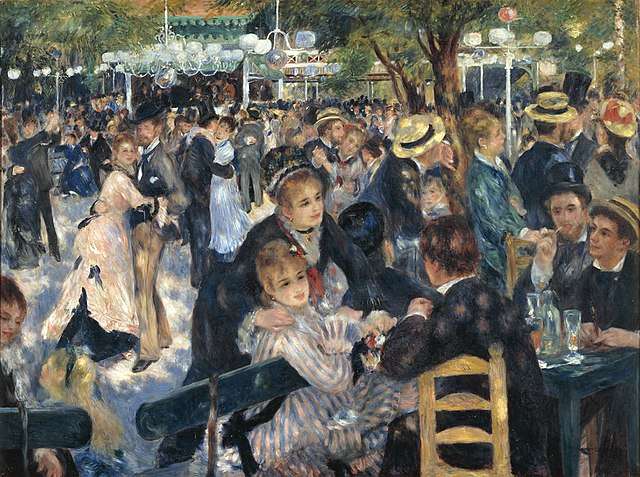|Museum of Impressionism|
Orsay Museum is a museum in Paris, on the Left Bank of the Seine. It is housed in the former Gare d’Orsay, a Beaux-Arts railway station built between 1898 and 1900. The museum holds mainly French art dating from 1848 to 1914, including paintings, sculptures, furniture, and photography.
Orsay Museum
It houses the largest collection of Impressionist and post-Impressionist masterpieces in the world, by painters including Berthe Morisot, Claude Monet, Édouard Manet, Degas, Renoir, Cézanne, Seurat, Sisley, Gauguin, and Van Gogh. Opening in 1986, the fine art museum is now one of the largest art museums in Europe.
The story of the museum is not trivial. Located along the Seine, opposite side of the Tuileries Gardens and Louvre Museum, Orsay museum took place in the former Orsay station, a building built for the 1900 Universal Exhibition. Thus, the building is the first “art work” to see in the collections of the Musée d’Orsay.
It is difficult to say Orsay Museum has masterpieces like the Louvre Museum with Mona Lisa, the Venus de Milo, and so forth. Orsay museum is close to Pompidou museum art collection in that sense, the whole collection is made of an exquisite large art view of the few decades that elapsed between 1848 and 1914.
What to see at Orsay Museum ?
The Musée d’Orsay in Paris houses an extensive collection of Impressionist masterpieces by renowned artists. These artworks are primarily displayed on Level 5 of the museum, which is dedicated to Impressionist paintings. For the most accurate and up-to-date information on the location of specific artworks, it’s advisable to consult the museum’s official floor plan or inquire at the information desk upon arrival.
I would recommend my 4 Orsay museum’s masterpieces :
Le Bassin aux nymphéas, harmonie verte by Claude Monet Level 5
Le Bassin aux nymphéas, harmonie verte is a painting produced by the impressionist painter Claude Monet in 1899. Belonging to the series of Water Lilies, it represents a bridge over a pool of water lilies. Actually, it is the garden of Monet in Giverny that you can visit all year long as well. Ask us a full tour of Impressionism outside Paris.
Le Déjeuner sur l’herbe by Édouard Manet Level 5
Le Déjeuner sur l’herbe – originally titled Le Bain (The Bath) – is a large oil on canvas painting by Édouard Manet created in 1862 and 1863. It depicts a female nude and a scantily dressed female bather on a picnic with two fully dressed men in a rural setting. Rejected by the Salon jury of 1863, Manet seized the opportunity to exhibit this and two other paintings in the 1863 Salon des Refusés, where the painting sparked public notoriety and controversy.
Le Bal du moulin de la Galette by Auguste Renoir Level 5
Le Bal du moulin de la Galette is an oil on canvas by the French impressionist painter Auguste Renoir, produced in 1876. It measures 131 × 175 cm. The scene, illuminated by a light that passes through the leaves. In fact, it takes place at the Moulin de la Galette restaurant, on the Montmartre hill, in Paris.
Church of Auvers-sur-Oise by Vincent van Gogh Orsay Museum Level 5 of Orsay museum
The Church of Auvers-sur-Oise is an oil painting on a canvas of 74 × 94 cm. It was made by the painter Vincent van Gogh in 1890 and is part of the Post-Impressionist movement. In May 1890, Van Gogh moved to Auvers-sur-Oise, a village in the suburbs of Paris. This work is one of the eighty paintings that the painter made during the last two months of his life. Indeed, it was during the time he spent in the village of Auvers-sur-Oise.
Enjoy the Orsay Museum on your own or with a private tour with a licensed guide.
Emy,






